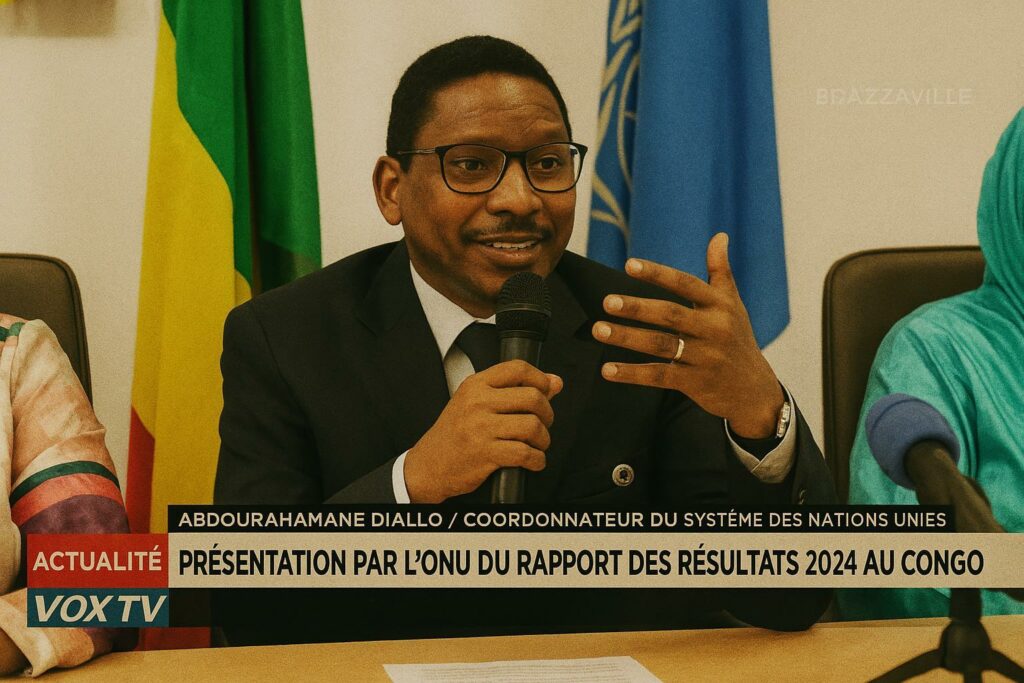Methodology behind the United Nations’ Scorecard
In a carefully choreographed ceremony at the Palais des Congrès in Brazzaville, the United Nations Country Team presented its Results Report 2024 to senior ministers, ambassadors and representatives of civil society. The document aggregates more than eighty performance indicators drawn from the United Nations Sustainable Development Cooperation Framework, national statistics and third-party audits. According to the Resident Coordinator’s office, the methodology privileges government-owned data sets supplemented by household surveys financed by the UN Development Programme and the African Development Bank. This hybrid approach, described by a UN statistician as ‘evidence with local DNA’ (UNCT Brazzaville 2024), allows the report to resonate with the stated priorities of the National Development Plan 2022-2026 while maintaining international comparability.
Health and Social Protection Indicators show Measured Improvement
Health outcomes occupy the most optimistic pages of the report. Maternal mortality has declined from 378 to 342 deaths per 100 000 live births, and vaccination coverage against measles rose to 86 percent, edging closer to the continental average (WHO 2024). The Minister of Health, Gilbert Mokoki, attributed this trend to the government’s decision to exempt pregnant women and children under five from primary-care fees, a policy partially underwritten by UNICEF and the Global Fund. ‘We observe steady but tangible gains, especially in rural Cuvette,’ noted Chris Mburu, the United Nations Resident Coordinator, during the presentation. In social protection, cash-transfer pilots run by the World Food Programme now reach 52 000 households, up from 34 000 in 2022, cushioning vulnerable communities against commodity-price shocks brought by regional inflation.
Economic Diversification and Sustainable Energy Ambitions
Beyond social sectors, Brazzaville’s quest for economic diversification receives cautious endorsement. Non-oil GDP expanded by an estimated 4.3 percent in 2023, with forestry, agri-processing and digital services identified as emergent drivers (World Bank 2023). The UN report credits the government’s ‘local content decree’ for elevating small and medium enterprises in public procurement, while pointing to the need for deeper credit markets and better trade logistics at Pointe-Noire port. In parallel, the Ministry of Energy and Hydraulics signalled its intention to raise the share of renewables to 35 percent by 2030, drawing on a new 135-megawatt solar project co-financed by the Green Climate Fund. Although still at feasibility stage, the initiative aligns with Congo’s updated Nationally Determined Contribution and could, in the words of an International Renewable Energy Agency adviser, ‘move the country from hydro-dominance to a genuinely balanced mix’ (IRENA 2024).
Governance, Peace and Regional Diplomacy
The section on governance offers a nuanced reading. Electoral management bodies are assessed as ‘progressing’ after the successful organisation of the 2022 legislative polls, where technical support from the United Nations Development Programme included biometric voter rolls and training of 18 000 polling agents. Transparency International’s Corruption Perceptions Index still places the Republic of Congo in the lower quartile globally, yet the report records a ten-rank improvement over two years. On the peace-and-security front, Brazzaville’s role as mediator in the Central African Republic dialogue is singled out. According to the Special Representative of the Secretary-General for Central Africa, Abdou Abarry, ‘Congo’s quiet diplomacy has been pivotal in sustaining the cease-fire corridor along the Oubangui River,’ an assessment that underscores the country’s growing soft-power credentials in the sub-region.
Financing Development and the Role of Multilateral Partnerships
A recurrent challenge remains the financing gap. The report estimates that an additional 1.2 billion US dollars per year is required to meet core SDG targets by 2030. While concessional loans from the IMF and Afreximbank have eased short-term liquidity constraints, officials stress the value of blended finance. The government has already issued its inaugural 30-million-dollar green bond on the regional Central African securities market, a first for a CEMAC member state. Commenting on the milestone, Finance Minister Rigobert Roger Andely argued that ‘sustainable instruments anchor investor confidence without sacrificing sovereignty’. The UN system positions itself as a catalyst rather than a lender, mapping potential pipeline projects and convening dialogues between line ministries and private-equity funds focused on impact investing.
Looking Ahead to the 2025–2026 Cooperation Framework
The Results Report does not confine itself to retrospective analysis. Draft priorities for the 2025–2026 cycle include climate-resilient agriculture, digital governance and blue-economy corridors along the Atlantic seaboard. Early consultations suggest continuity with President Denis Sassou Nguesso’s vision of ‘modernité dans la stabilité’, yet diplomats note a subtle shift toward metrics that capture inclusive growth and gender parity. European ambassadors present at the launch privately welcomed what one termed a ‘new grammar of accountability’, though all agreed that domestic ownership remains decisive. The final negotiation of the cooperation framework is scheduled for October, after a round of provincial dialogues in Owando, Dolisie and Impfondo.

